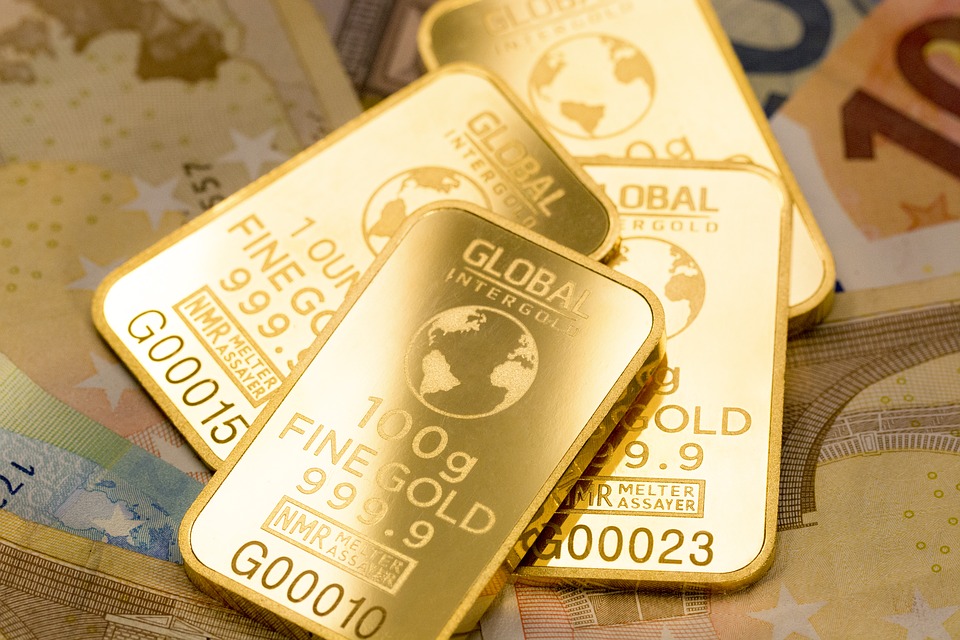Thomson Reuters GFMS on Thursday published a study on global production and consumption of gold in the third quarter of 2017. According to preliminary estimates of experts, the total volume of production in the past quarter amounted to 841 tons. This result is only 3 tons less than a year ago and 11 tons below the historical high established in the third quarter of 2015. At the same time, gold recovery from scrap decreased by 39 tons, to 308 tons, mainly due to a third of the flow of scrap from India.
However, the reduced supply of gold was more than compensated by the fall in demand. GFMS estimates that the consumption of precious metal for the reporting period was 926 tons, which is 72 tons less than the third quarter of 2016. Weaker global demand for gold was observed in the second quarter of 2015, then for the quarter, consumption was only 849 tons. As a result, the metal surplus in the world market has reached a maximum level since the fourth quarter of 2005 - 230 tons. The main reason for the sharp decline in global gold consumption was the reduced investment demand - by 135 tons, to 307 tons. The jewelry and other industries were able to partially compensate for the drop in demand from investors. Demand from jewelers increased for the quarter by 12.8%, to 527 tons, from the industry - by 3.4%, to 92 tons.
The fall in investment demand can be explained by a sharp decline in investors' demand for exchange-traded funds (ETF), focused on investing in gold. As a result of the quarter, the assets of such funds grew by 30 tons, which is almost four times lower than last year's indicator (114 tons). "At the moment, almost all asset markets of developed and developing countries have been marked by growth since the beginning of the year amid favorable economic data and accelerated inflation.
In these conditions, Julius Baer’s analyst of the raw materials market, Carsten Menke, expected rather a sellout of gold by investors. "Most likely, this did not happen because of geopolitical fears, including growing tensions between the United States and North Korea," Mr. Menke said.
Analysts say that strong growth in investment demand for gold is unlikely to happen by the end of the year in the absence of escalating tensions between the US and North Korea. "We will see the potential for weakening investment demand as soon as geopolitical tensions ease or leave the field of view of financial markets, as happened, for example, with the Ukrainian crisis," Carsten Menke says. Demand from jewelry manufacturers in the coming months may support the market, but will not be able to determine the situation on it.
source: reuters.com
However, the reduced supply of gold was more than compensated by the fall in demand. GFMS estimates that the consumption of precious metal for the reporting period was 926 tons, which is 72 tons less than the third quarter of 2016. Weaker global demand for gold was observed in the second quarter of 2015, then for the quarter, consumption was only 849 tons. As a result, the metal surplus in the world market has reached a maximum level since the fourth quarter of 2005 - 230 tons. The main reason for the sharp decline in global gold consumption was the reduced investment demand - by 135 tons, to 307 tons. The jewelry and other industries were able to partially compensate for the drop in demand from investors. Demand from jewelers increased for the quarter by 12.8%, to 527 tons, from the industry - by 3.4%, to 92 tons.
The fall in investment demand can be explained by a sharp decline in investors' demand for exchange-traded funds (ETF), focused on investing in gold. As a result of the quarter, the assets of such funds grew by 30 tons, which is almost four times lower than last year's indicator (114 tons). "At the moment, almost all asset markets of developed and developing countries have been marked by growth since the beginning of the year amid favorable economic data and accelerated inflation.
In these conditions, Julius Baer’s analyst of the raw materials market, Carsten Menke, expected rather a sellout of gold by investors. "Most likely, this did not happen because of geopolitical fears, including growing tensions between the United States and North Korea," Mr. Menke said.
Analysts say that strong growth in investment demand for gold is unlikely to happen by the end of the year in the absence of escalating tensions between the US and North Korea. "We will see the potential for weakening investment demand as soon as geopolitical tensions ease or leave the field of view of financial markets, as happened, for example, with the Ukrainian crisis," Carsten Menke says. Demand from jewelry manufacturers in the coming months may support the market, but will not be able to determine the situation on it.
source: reuters.com



















